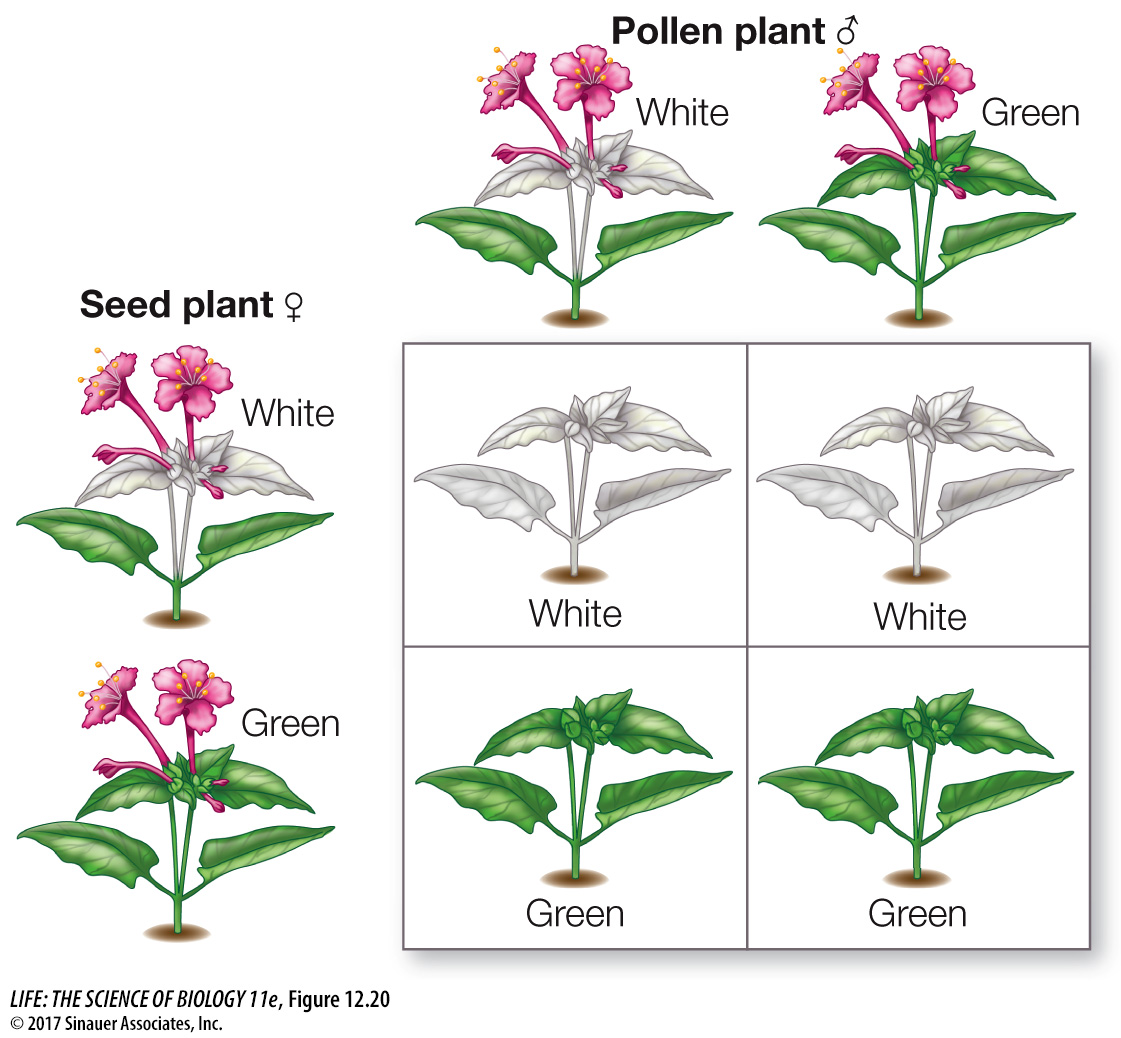key concept 12.5 Some Eukaryotic Genes Are Outside the Nucleus
The nucleus is not the only organelle in a eukaryotic cell that carries genetic material. *Mitochondria and plastids contain small numbers of genes. For example, in humans there are about 21,000 genes coding for proteins in the nuclear genome and 37 in the mitochondrial genome. Plastid genomes are about five times larger than those of mitochondria.
focus your learning
Mitochondria and plastids contain genes that follow inheritance patterns that differ from inheritance patterns of nuclear genes.
*connect the concepts Key Concept 5.5 describes the endosymbiotic theory, which proposes that some organelles—
The inheritance of organelle genes differs from that of nuclear genes for several reasons:
In most organisms, mitochondria and/or plastids are inherited only from the female. As you will learn in Chapter 43, eggs contain abundant cytoplasm and organelles, but the only part of the sperm that survives to take part in the union of haploid gametes is the nucleus. So you have inherited your mother’s mitochondria (with their genes), but not your father’s.
There may be hundreds of mitochondria and/or plastids in a cell. So a cell is not diploid for organelle genes.
Organelle genes tend to mutate at much faster rates than nuclear genes, so organelle genes often have multiple alleles.
Although most genes for organelle proteins are in the nucleus, several of the genes carried by cytoplasmic organelles are important for organelle assembly and function, and mutations of these genes can have profound effects on the organism. The phenotypes resulting from such mutations reflect the organelles’ roles. For example, in plants and some photosynthetic protists, certain plastid gene mutations affect the proteins that assemble chlorophyll molecules into photosystems. These mutations result in a phenotype that is essentially white instead of green. The inheritance of this phenotype follows a non-

262